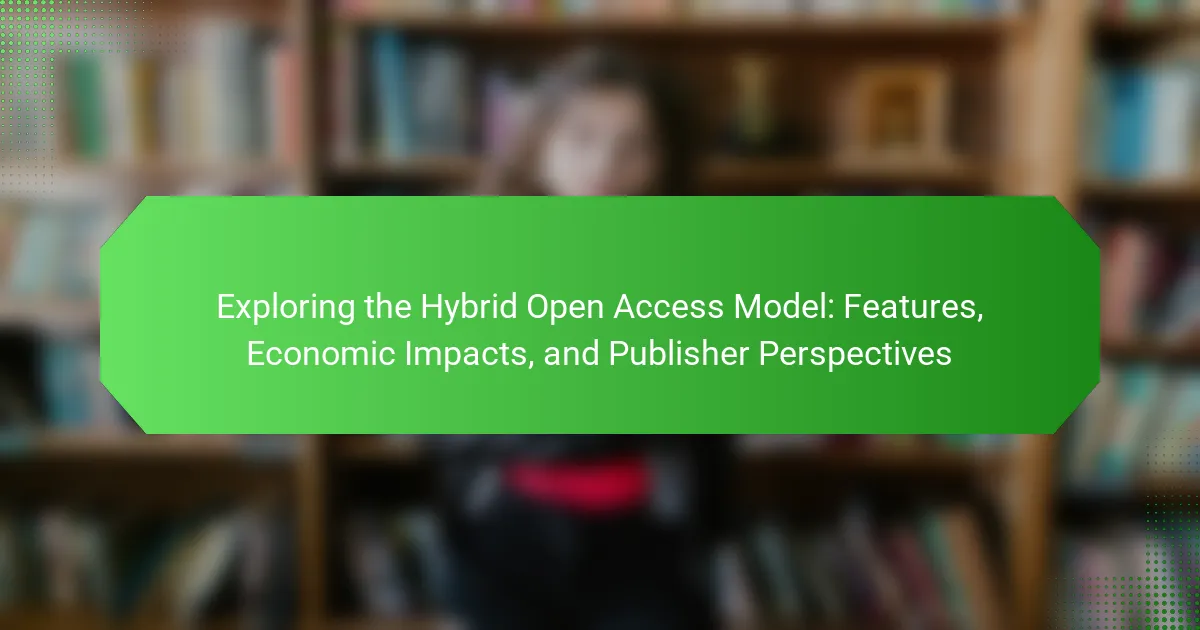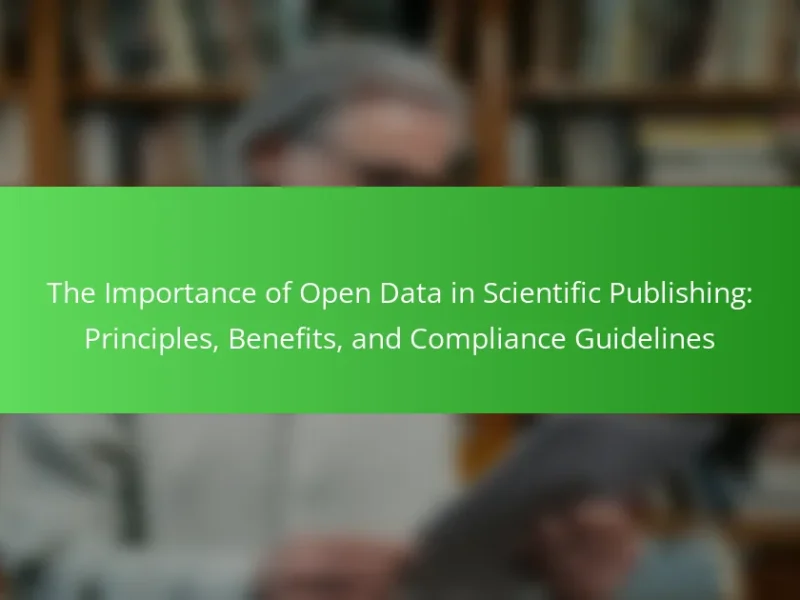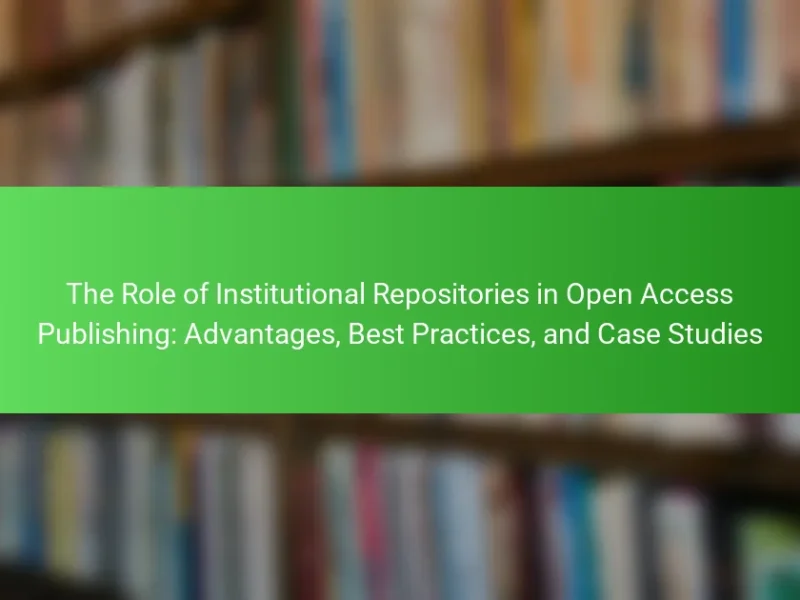The Hybrid Open Access Model is a publishing approach that allows authors to publish certain articles as open access while retaining subscription-based access for others. This model provides flexibility for authors and publishers, enabling the choice of open access for specific articles often at a fee. The article explores the economic impacts of this model, highlighting the potential for increased revenue through article processing charges (APCs) and the implications for institutional budgeting. Additionally, it examines the varying perspectives of publishers, some of whom see it as a viable revenue stream, while others express concerns about its long-term sustainability and the effects on subscription revenues. Overall, the article presents a comprehensive overview of the Hybrid Open Access Model, its features, economic consequences, and publisher viewpoints.
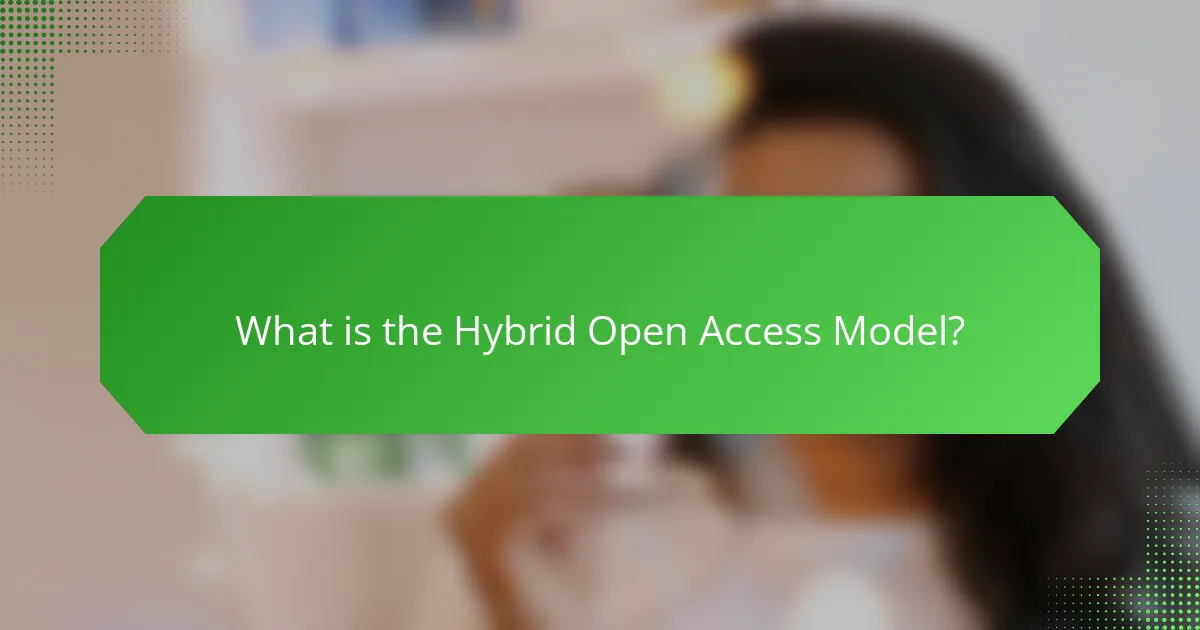
What is the Hybrid Open Access Model?
The Hybrid Open Access Model allows authors to publish their work in open access while retaining subscription-based content. In this model, some articles are freely accessible, while others remain behind paywalls. This approach provides flexibility for authors and publishers. It enables researchers to choose open access for specific articles, often for a fee. The model combines traditional subscription models with open access principles. This dual approach aims to balance revenue generation with wider dissemination of research. The Hybrid Open Access Model is increasingly adopted by academic publishers to meet diverse funding and access needs.
How does the Hybrid Open Access Model differ from traditional publishing models?
The Hybrid Open Access Model allows some articles to be freely accessible while others remain behind paywalls. Traditional publishing models typically require all content to be behind paywalls. In the Hybrid model, authors can pay fees to make their work open access. This contrasts with traditional models that rely solely on subscription fees for revenue. Hybrid Open Access combines elements of both open access and subscription-based publishing. It provides flexibility for authors and institutions. This model has gained popularity due to the increasing demand for open access. Studies show that it can enhance visibility and citations for published work.
What are the key characteristics of the Hybrid Open Access Model?
The Hybrid Open Access Model allows both subscription-based and open access publishing within the same journal. This model enables authors to choose open access for their articles while maintaining subscription access for others. It promotes wider dissemination of research findings. The model often requires authors to pay an Article Processing Charge (APC) for open access publication. Hybrid journals are typically well-established and recognized in their fields. This model provides flexibility for authors and institutions. It also supports traditional revenue streams for publishers. Overall, the Hybrid Open Access Model balances accessibility with sustainability in scholarly publishing.
How does the Hybrid Open Access Model facilitate access to research?
The Hybrid Open Access Model facilitates access to research by allowing authors to publish their work openly while retaining subscription-based access for other articles in the same journal. This model combines traditional subscription publishing with open access, offering flexibility to authors. It enables broader dissemination of research findings to a wider audience, including those without institutional subscriptions. According to a study published in “PLOS ONE,” open access articles receive 30% more citations than non-open access articles. This increased visibility enhances collaboration and knowledge sharing among researchers globally.
What are the main features of the Hybrid Open Access Model?
The Hybrid Open Access Model combines traditional subscription-based access with open access publishing. This model allows authors to choose to make their articles freely accessible while still maintaining subscription options for other content. It often requires authors to pay Article Processing Charges (APCs) to publish their work openly. This model provides a pathway for increased visibility and citation potential for research. Many publishers adopt this approach to balance revenue from subscriptions and APCs. The hybrid model supports diverse funding sources for research dissemination. It also addresses varying institutional and author preferences regarding access. Studies indicate that hybrid journals can enhance the overall impact of published research.
What types of content are typically included in the Hybrid Open Access Model?
The Hybrid Open Access Model typically includes a mix of subscription-based and open access content. This model allows some articles within a subscription journal to be freely accessible. Authors can pay an article processing charge to make their work open access. This approach provides wider visibility for research while maintaining subscription revenue. Many leading publishers adopt this model to balance accessibility and profitability. Studies have shown that hybrid journals can increase citations for open access articles. Overall, the model supports diverse publishing strategies and funding sources.
How is the publication fee structured in the Hybrid Open Access Model?
In the Hybrid Open Access Model, publication fees are typically structured as article processing charges (APCs). Authors or their institutions pay these fees to make their articles freely accessible while the journal retains subscription access for other articles. The fees can vary widely depending on the journal and publisher. On average, APCs range from $1,000 to $3,000 per article. Some publishers may offer discounts or waivers for certain authors. This fee structure allows journals to maintain revenue from subscription models while expanding access to individual articles.
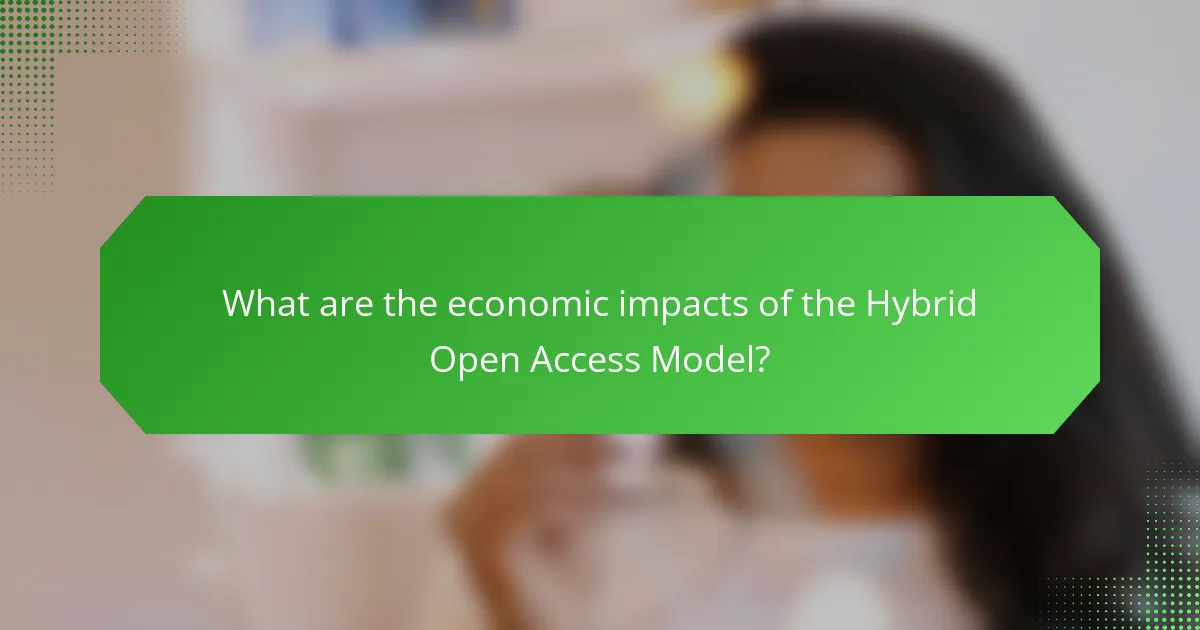
What are the economic impacts of the Hybrid Open Access Model?
The Hybrid Open Access Model has significant economic impacts on scholarly publishing. This model allows authors to publish their research openly while retaining subscription-based access for other articles. It creates new revenue streams for publishers through article processing charges (APCs).
Publishers can increase their income as more authors choose open access options. This model also encourages wider dissemination of research, potentially leading to increased citations and impact.
However, it can lead to financial strain on institutions that must cover APCs for their researchers. A study by the European Commission found that hybrid models can raise overall publishing costs, complicating budgeting for libraries.
Overall, the economic impacts are mixed, balancing increased accessibility with potential higher costs for institutions.
How does the Hybrid Open Access Model affect research funding?
The Hybrid Open Access Model influences research funding by shifting financial responsibilities toward authors and institutions. This model allows researchers to publish their work openly while still being part of subscription-based journals. Consequently, funding agencies often need to allocate additional resources for article processing charges (APCs). A study by the European Commission found that APCs can range from $1,000 to $5,000 per article, impacting overall research budgets. Additionally, institutions may face increased costs as they balance subscription fees with APCs. This dual funding requirement can strain limited research budgets, particularly for smaller institutions. Thus, the Hybrid Open Access Model creates a complex financial landscape for research funding.
What are the implications for institutional budgets?
The implications for institutional budgets in the context of the hybrid open access model include increased costs for article processing charges (APCs). Institutions may face higher financial burdens as they balance subscription fees with additional APCs for open access publications. A study by the Research Information Network indicates that universities could see budget increases of 20-30% to accommodate these costs. Furthermore, the hybrid model may lead to a shift in funding priorities, requiring institutions to reallocate resources from other areas. This financial strain can impact research funding and institutional support for other academic initiatives.
How does the model influence the cost of publishing for researchers?
The hybrid open access model influences the cost of publishing for researchers by requiring payment of article processing charges (APCs) for open access publication. Researchers may face increased costs compared to traditional subscription-based models. This model allows for both subscription access and open access options, which can lead to higher fees. According to a study by Laakso et al. (2011), APCs can range from $1,000 to $5,000 per article. The financial burden can impact researchers’ budgets, especially for those in institutions with limited funding. Thus, the hybrid model can create a financial barrier for some researchers seeking to publish their work openly.
What are the potential economic benefits of the Hybrid Open Access Model?
The Hybrid Open Access Model can enhance economic benefits through increased visibility and accessibility of research. This model allows for broader dissemination of scholarly work. As a result, it can lead to higher citation rates. Increased citations often translate into greater academic influence and potential funding opportunities. The model also generates revenue through article processing charges (APCs). These fees can support journal sustainability and reduce reliance on subscription models. Additionally, hybrid models can attract more authors seeking open access options, thus expanding the publisher’s portfolio. Economic studies indicate that institutions adopting hybrid models may see improved return on investment in research outputs.
How does the model impact the visibility and citation of research?
The hybrid open access model increases the visibility and citation of research. This model allows authors to publish their articles as open access while maintaining subscription-based content. Research indicates that articles published under this model receive more citations compared to those behind paywalls. A study by Laakso et al. (2011) found that open access articles can be cited up to 18% more than traditional publications. Furthermore, the model enhances discoverability through platforms like Google Scholar and institutional repositories. Increased visibility leads to wider dissemination and engagement with the research community. Thus, the hybrid model positively influences both visibility and citation metrics for scholarly work.
What opportunities does the Hybrid Open Access Model create for publishers?
The Hybrid Open Access Model creates significant revenue opportunities for publishers. This model allows publishers to offer both subscription-based and open access content. Publishers can generate income from article processing charges (APCs) when authors choose open access. This dual revenue stream enhances financial sustainability. Additionally, it attracts a wider audience by increasing visibility and accessibility of research. Studies show that open access articles receive more citations, further boosting publisher reputation. The model also facilitates partnerships with funding agencies that require open access publication. Overall, the Hybrid Open Access Model aligns with the evolving landscape of scholarly communication.
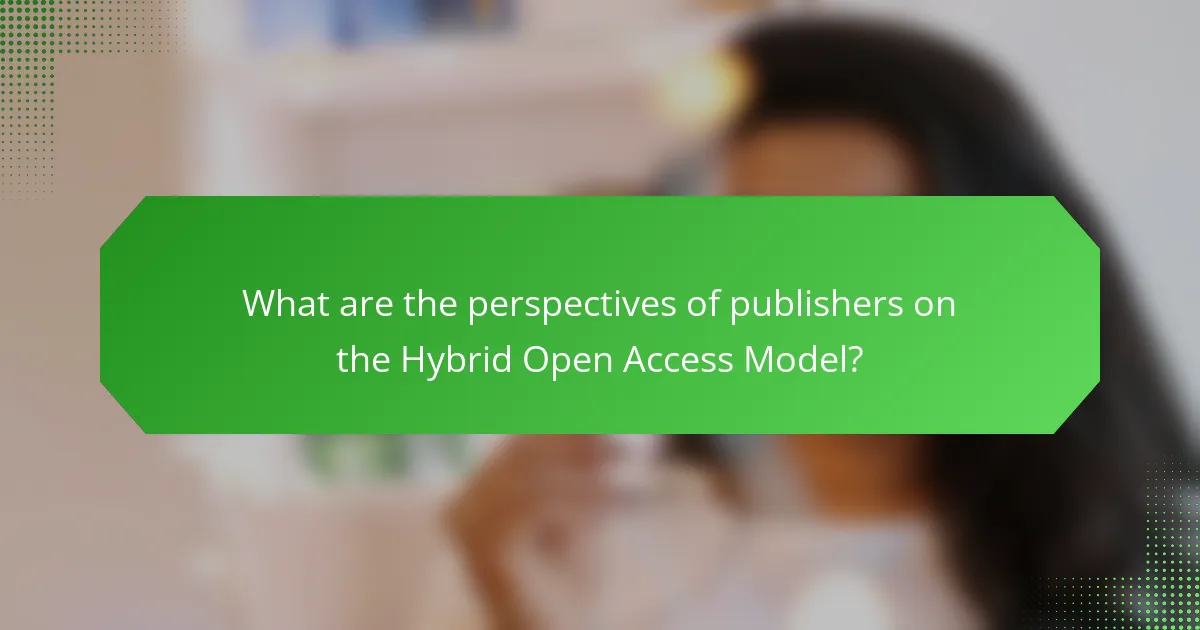
What are the perspectives of publishers on the Hybrid Open Access Model?
Publishers generally have mixed perspectives on the Hybrid Open Access Model. Some publishers view it as a way to increase revenue through article processing charges (APCs). They believe that this model offers a compromise between traditional subscription access and full open access. However, other publishers express concerns about sustainability and the potential for diminishing subscription revenues. They worry that widespread adoption of hybrid models may lead to financial instability. Evidence from industry reports shows that many publishers are exploring hybrid options but remain cautious about their long-term viability.
How do publishers view the sustainability of the Hybrid Open Access Model?
Publishers generally view the sustainability of the Hybrid Open Access Model with skepticism. They express concerns about the financial viability of this model. Many publishers highlight the potential for increased costs associated with article processing charges. There is also apprehension regarding the balance between subscription income and open access fees. Some publishers argue that the model may not be sustainable in the long term. Studies indicate that reliance on hybrid models can lead to funding challenges. Additionally, the fluctuating demand for open access can complicate revenue predictions. Overall, publishers emphasize the need for a more stable funding framework to support hybrid open access.
What challenges do publishers face with the Hybrid Open Access Model?
Publishers face several challenges with the Hybrid Open Access Model. One significant challenge is balancing subscription revenue with article processing charges (APCs). This dual revenue stream can complicate financial planning. Another challenge is managing copyright issues and licensing agreements. Publishers must ensure compliance with various open access policies. Additionally, there is the risk of potential market cannibalization. Authors may choose to publish in fully open access journals instead. Publishers also encounter difficulties in maintaining the quality of peer review. The increased volume of submissions can strain existing resources. Finally, transparency in costs and funding sources is often lacking. This can lead to confusion among authors and institutions regarding fees.
How do publishers adapt their business strategies in response to the Hybrid Open Access Model?
Publishers adapt their business strategies in response to the Hybrid Open Access Model by diversifying revenue streams. They increasingly offer a mix of subscription and open access options. This approach allows them to cater to a broader audience. Publishers also invest in digital platforms to enhance accessibility and user experience. They may implement article processing charges (APCs) to offset costs associated with open access publishing. Additionally, collaborations with institutions and funding agencies are becoming more common. These partnerships help share the financial burden of publishing. Data from the International Association of Scientific, Technical and Medical Publishers indicates a significant shift towards open access in recent years. This trend compels publishers to reassess pricing models and distribution methods.
What are the concerns publishers have regarding the Hybrid Open Access Model?
Publishers have several concerns regarding the Hybrid Open Access Model. One primary concern is the financial sustainability of this model. Publishers worry that the model may lead to decreased subscription revenues. They fear that offering hybrid options could undermine traditional subscription models. Another concern involves the potential for increased publication fees. Publishers are apprehensive that high article processing charges (APCs) may deter authors from publishing. There are also worries about the quality of peer review in hybrid journals. Publishers believe that the influx of open access articles may compromise standards. Additionally, the complexity of managing both open access and subscription content raises operational challenges. These concerns highlight the tension between accessibility and economic viability in scholarly publishing.
How do publishers perceive the impact on subscription revenues?
Publishers generally perceive the impact on subscription revenues as complex and varied. Many publishers report a decline in traditional subscription revenues due to the rise of open access models. This shift often leads to increased competition and pressure on pricing strategies. Some publishers, however, see opportunities for new revenue streams through hybrid models. These models allow for both subscription and open access options, potentially stabilizing revenue. According to a 2021 study by the International Association of Scientific, Technical and Medical Publishers, 70% of publishers acknowledged changes in revenue dynamics due to the hybrid model. They noted that while some subscription revenues may decline, open access fees can offset these losses. Overall, publisher perceptions vary based on their specific business models and market positioning.
What are the risks associated with transitioning to a Hybrid Open Access Model?
The risks associated with transitioning to a Hybrid Open Access Model include financial instability and potential loss of revenue. Publishers may experience decreased subscription income as more content becomes openly accessible. This model could also lead to increased costs for authors, who may have to pay article processing charges. Additionally, there is a risk of unequal access to funding for these charges, disadvantaging researchers from lower-income institutions. The model may create confusion among readers regarding access rights and licensing. Lastly, there is a concern about the sustainability of this model in the long term, as it relies heavily on institutional support and funding.
What best practices can be adopted for navigating the Hybrid Open Access Model?
Adopting best practices for navigating the Hybrid Open Access Model involves several key strategies. First, researchers should understand the specific policies of their target journals regarding open access. Many journals have different rules about what can be made open access and under what conditions. Next, authors should consider their funding sources and whether they cover open access fees. Institutions often have agreements with publishers that can reduce or eliminate these costs.
Additionally, authors should be transparent about their funding and any potential conflicts of interest in their publications. This transparency can help in maintaining the integrity of the research. Collaboration with librarians can also be beneficial. Librarians can provide valuable insights on open access options and help authors navigate the submission process.
Regularly reviewing institutional repositories and open access mandates is crucial. This ensures compliance with funder requirements and maximizes visibility for published work. Lastly, engaging with the academic community through workshops and seminars can enhance understanding of the Hybrid Open Access Model and its implications. These practices collectively promote effective navigation of the Hybrid Open Access Model.
The Hybrid Open Access Model represents a publishing approach that combines open access and traditional subscription-based content, allowing authors to publish some articles freely while retaining paywalled access for others. This model offers flexibility for researchers and publishers, facilitating broader dissemination of research findings and potentially increasing citation rates. Key characteristics include the requirement of article processing charges (APCs) for open access publication and the economic implications for institutional budgets and funding strategies. The article explores the perspectives of publishers on the sustainability and challenges of this model, as well as best practices for navigating its complexities.
